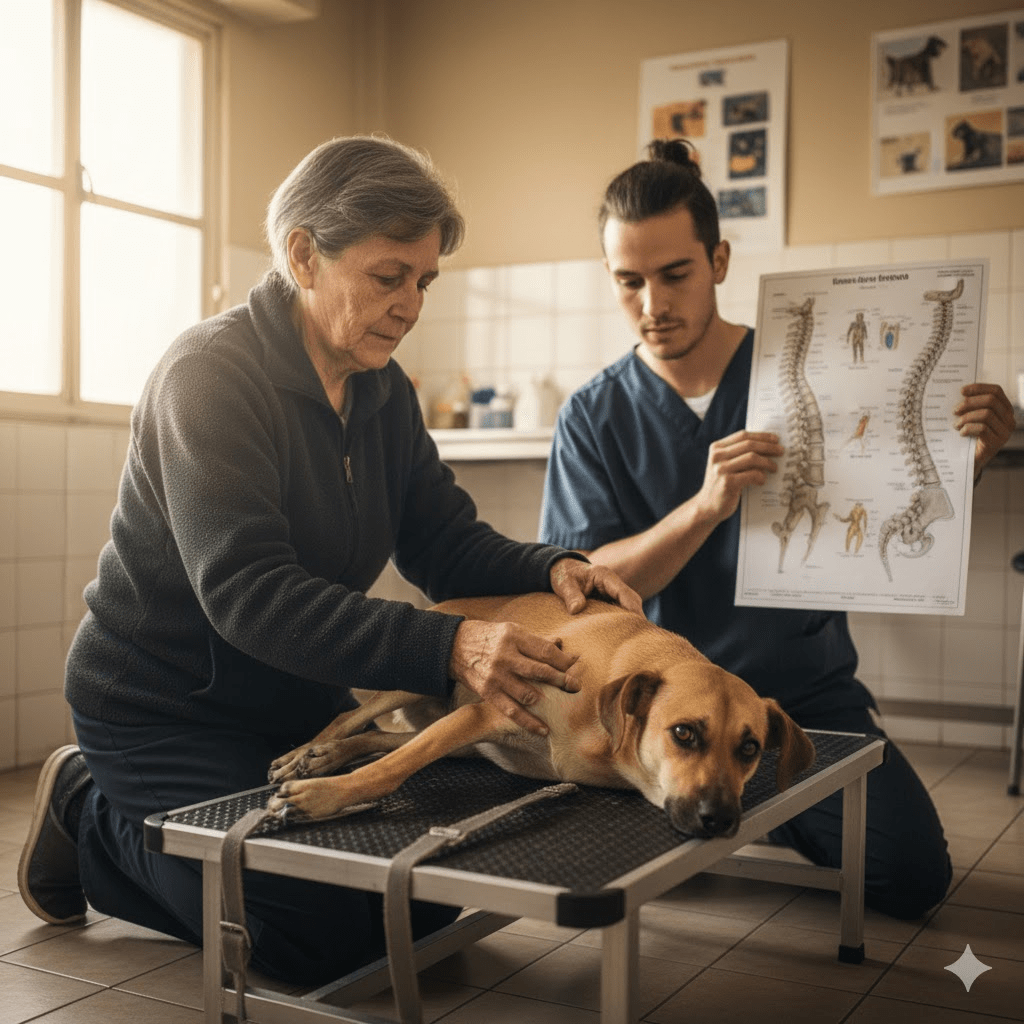The scorching afternoon sun beat down on the cracked pavement, reflecting a shimmering heat haze that distorted the world. Amidst the discarded leaves and urban debris, a small, emaciated dog lay motionless, her fur matted and dull, her eyes barely open. This was Eva, and her story, unbeknownst to her at that moment, was about to take a turn that would defy all expectations. She had been found abandoned, paralyzed from the waist down, a devastating injury to her vertebrae suspected to be the result of a hit-and-run.

Her hind legs, once capable of playful sprints, now lay limp and unresponsive. The vibrant spark of life that should have defined a young dog was dangerously dim, replaced by an exhaustion that seemed to seep into her very bones. Days turned into weeks of silent suffering, her existence a testament to resilience, yet teetering on the edge of hopelessness. Every breath was a struggle, every attempt to shift her position a painful reminder of her immobility. The world, it seemed, had forgotten Eva, leaving her to face an uncertain fate alone on the unforgiving streets.

Just as her spirit threatened to extinguish, a glimmer of hope appeared in the form of a local animal rescue volunteer, Maria. Maria, known for her unwavering dedication to the most desperate cases, stumbled upon Eva during her daily rounds. The sight of the little dog, vulnerable and broken, stirred something deep within her. Despite the grim prognosis from the local vet – a severing of the spinal cord seemed likely, with little chance of recovery – Maria refused to give up. She saw not a lost cause, but a fighter. Eva was carefully transported to a small, makeshift clinic, a sanctuary where compassion often outweighed resources. The initial diagnosis was bleak, confirming severe damage to the vertebrae, consistent with a forceful impact. Euthanasia was presented as the most humane option.

But Maria, having witnessed Eva’s faint but persistent will to live, decided to gamble against the odds. She rallied a small team of compassionate individuals, including a physiotherapist who specialized in canine rehabilitation and a veterinary assistant with a soft spot for challenging cases. The plan was unconventional and demanded immense patience: a regimen of daily physical therapy, gentle massage, specialized pain management, and a nutrient-rich diet. Eva’s days were now filled with the unfamiliar sensations of human touch, not always pleasant, but always with an underlying current of kindness. Her eyes, once vacant, began to follow Maria’s movements, a flicker of awareness returning.

Months crawled by, marked by tiny, almost imperceptible victories. A twitch of a toe. A slight tremor in a hind leg during therapy. Each small movement was celebrated as a monumental achievement, fueling the team’s resolve. The physiotherapist, Dr. Alex, developed an innovative hydrotherapy routine, allowing Eva to experience weightlessness and attempt movement without the strain of gravity. It was during one of these sessions that the first truly astonishing twist occurred. As Alex gently supported Eva in the warm water, a distinct, deliberate kick emanated from one of her “paralyzed” legs. Gasps filled the room. It was not a reflex; it was a conscious effort.

The medical team, initially skeptical of any significant recovery, was dumbfounded. Further diagnostics, including advanced imaging not available initially, revealed a surprising truth: Eva’s spinal cord had not been completely severed. Instead, it had suffered a severe contusion and swelling, which, over time and with consistent therapy, was slowly healing. The previous diagnosis, made under duress and with limited resources, had been an understandable misinterpretation of the initial, severe trauma. This newfound understanding propelled Eva’s rehabilitation with renewed vigor and optimism.






